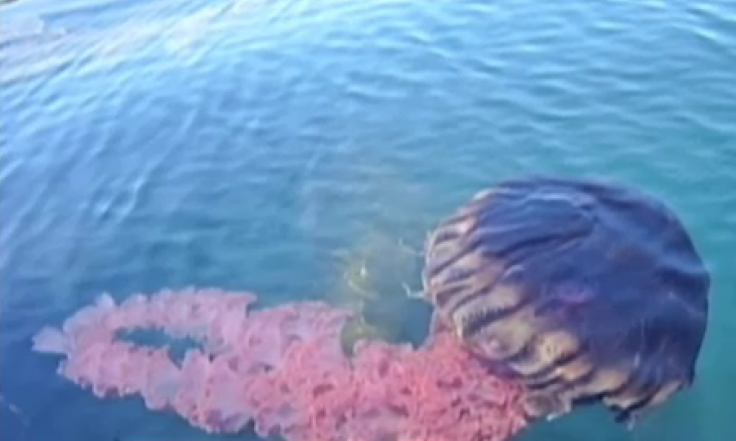Rare Black Jellyfish Spotted Off California Coast, ‘Dark Membranes’ Seen Stuck To Swimmers’ Bodies [PHOTOS]


Rare jellyfish, some as large as the size of a hula hoop, have been spotted off California coasts. Believed to be black jellyfish, the marine mammal has been stinging swimmers over 4th of July weekend, the Associated Press reports.
Black jellyfish, also known as Chrysaora achlyos, have a dark burgundy belly and black tentacles that can grow up to 30 feet long. A kayaker spotted a black jellyfish on July 1 that he described as being the size of a hula hoop. In Laguna Beach, swimmers came out of the ocean with dark membranes stuck to their bodies, AP reports.
"And all of a sudden, I see this big jelly fish swimming right by me," Joe Richman, a kayaker who spotted the rare jellyfish earlier this month in La Jolla, Calif., told CBS 8.
The sudden influx could be caused by warm ocean water that brings the jellyfish closer to shore looking for food, Nigela Hillgarth of Birch Aquarium in La Jolla, said. The species was first identified and given its name in 1997. It was seen in large numbers off the San Diego coast in 1989 and resurfaced 10 years later. Black jellyfish originated in the eastern Pacific Ocean and were last seen off California coasts in 2010, according to the Monterey Bay Aquarium.
“They are not likely to kill you. They are not a deadly jellyfish, but they can give you a painful sting," Richman said.
Professor Greg Rouse, from the Scripps Institution of Oceanography, agrees. "Oh, if I saw one, I'd be wanting to snorkel all around it. But those tentacles are so long you have to really watch out for them."
Richman captured photos of his rare sighting. Aquarist Vince Levesque from the Birch Aquarium confirmed that Richman saw a black jellyfish.
Black jellyfish can reach more than 3 feet in diameter and 20 feet in length and have 25-foot-long tentacles. They usually swim in calm, deep waters but every once in a while are spotted in booms off Southern California, according to the Monterey Bay Aquarium.
© Copyright IBTimes 2024. All rights reserved.












